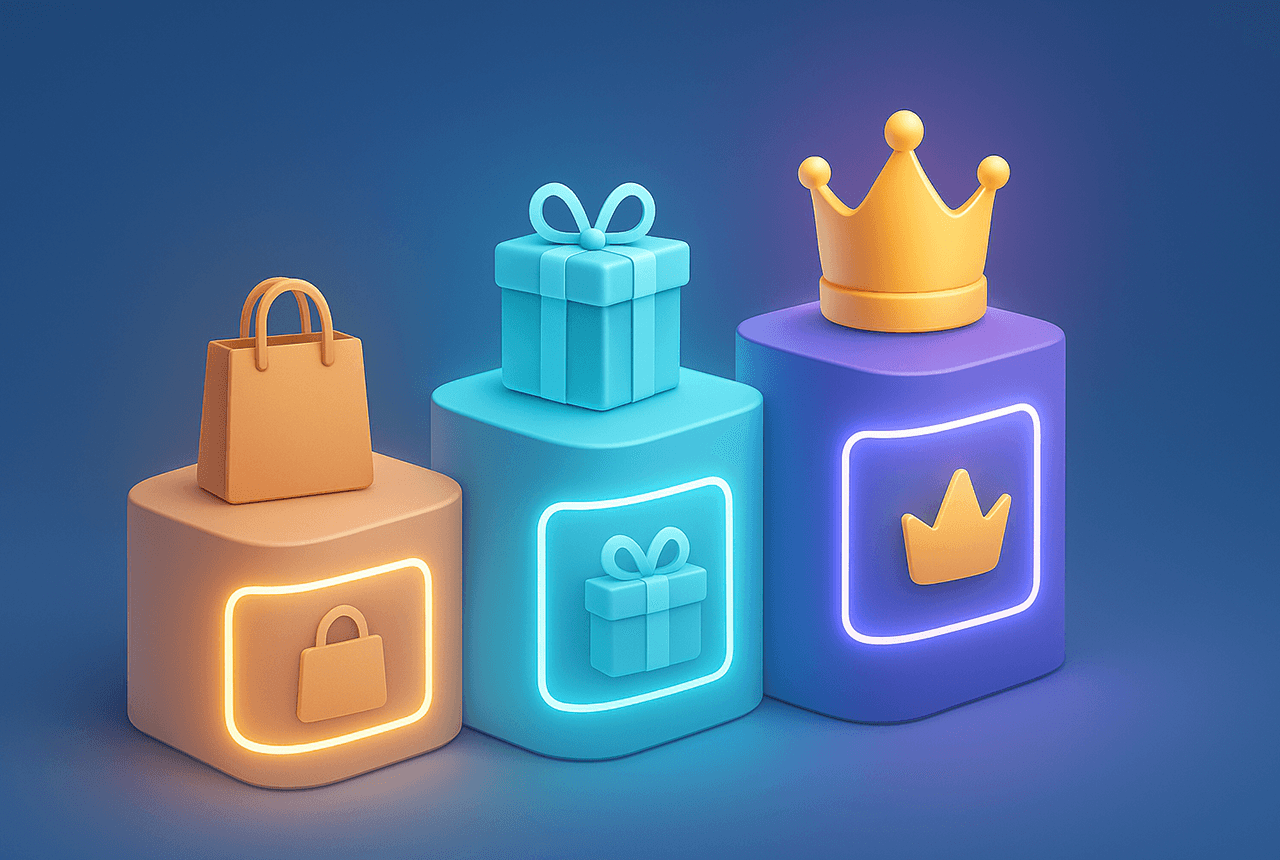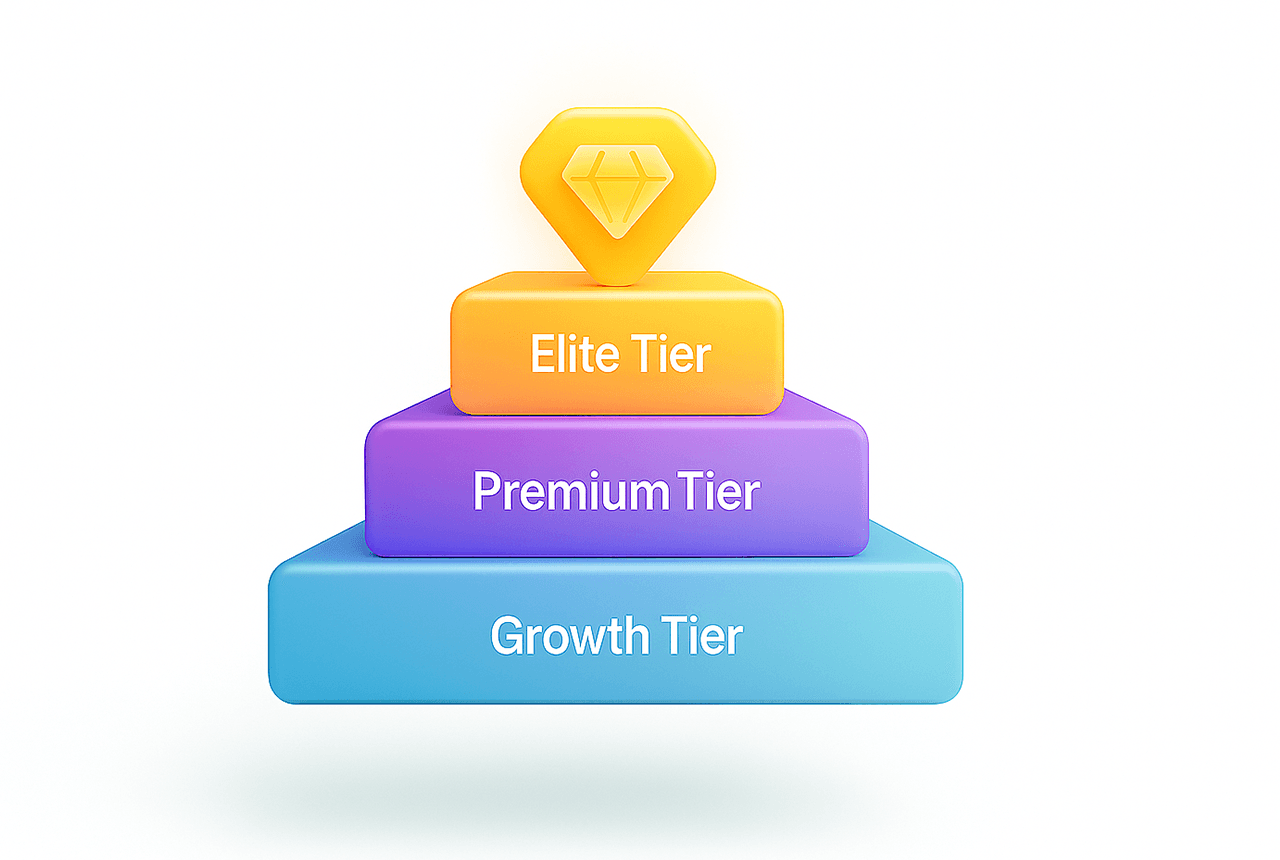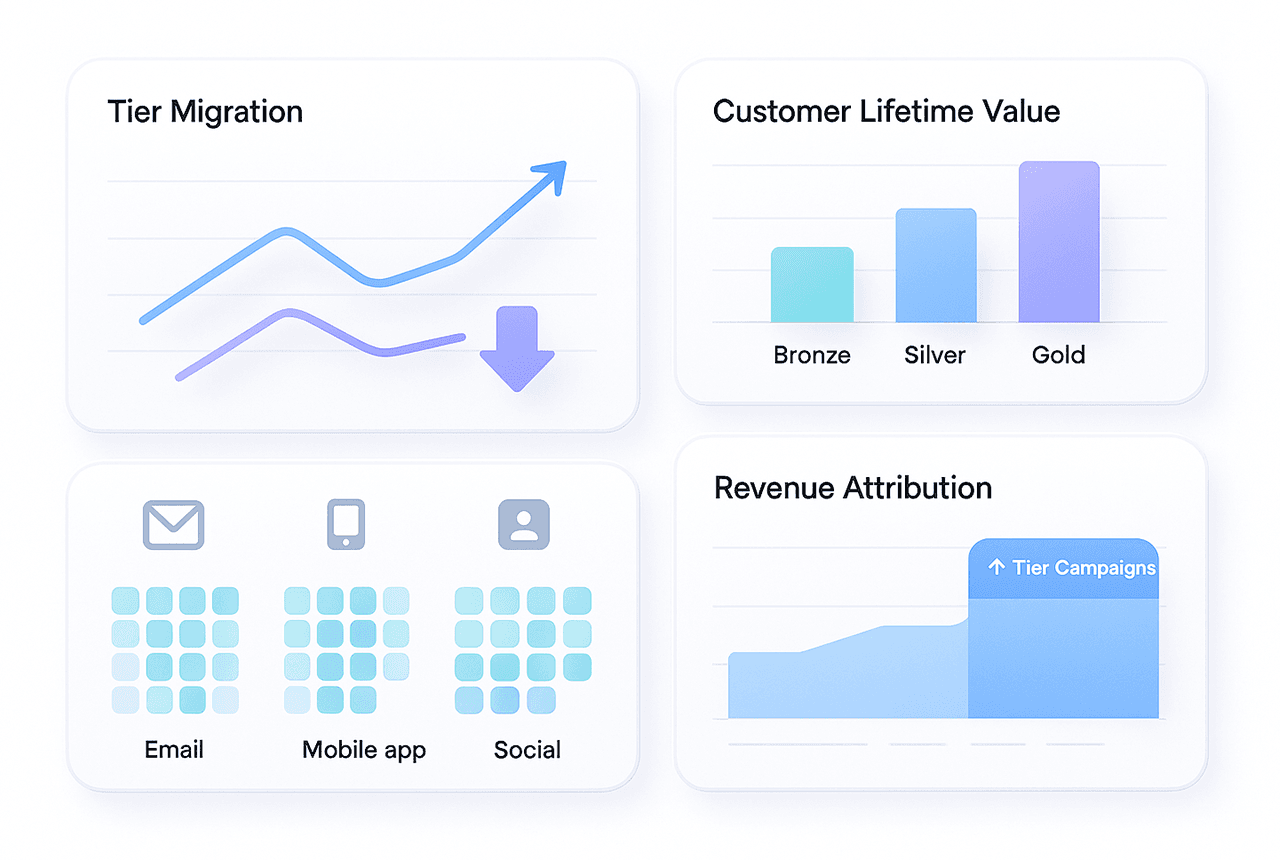The Ultimate Guide to Building Effective Tiered Loyalty Programs

In today's hyper-competitive ecommerce landscape, loyalty managers are facing a perfect storm of challenges. Customer acquisition costs have increased by 222% between 2013 and 2022 according to SimplicityDX research, while traditional loyalty programs are delivering diminishing returns. Are you struggling with single-digit engagement rates on your current program? Watching customers earn points but never redeem them? Seeing competitors poach your best customers despite your loyalty investments?
You're not alone. The majority of loyalty programs fail because they treat all customers the same and offering identical rewards to bargain hunters and brand advocates alike. This one-size-fits-all approach leaves money on the table while failing to recognize and nurture your most valuable customer relationships.
What Are Tiered Loyalty Programs?
Tiered loyalty programs create a hierarchical structure where customers unlock progressively better benefits as they increase their engagement, spending, or loyalty activities. Unlike traditional point-based systems, tiered programs tap into fundamental psychological drivers: status, achievement, and exclusivity. Think Sephora's Beauty Insider program with its Insider, VIB, and Rouge tiers, or Amazon Prime's evolution toward tiered benefits.
The psychology is powerful: customers don't just earn rewards; they climb status ladders. This gamification element creates what behavioural economists call "goal gradient effect," where customers accelerate their purchasing behaviour as they approach tier thresholds.
Why Tiered Loyalty Programs Outperform Traditional Models
Industry research from Antavo's Global Customer Loyalty Report reveals that tiered loyalty programs deliver 1.8x higher return on investment compared to programs without tiers, while 74% of consumers say they would engage more with brands offering tiered programs based on spending levels. Here's why they're so effective:
Enhanced Customer Segmentation: Tiers naturally segment your customer base by value and behaviour, enabling hyper-targeted marketing campaigns. Your top-tier customers require different messaging than entry-level members.
Increased Purchase Frequency: The pursuit of tier advancement creates artificial purchase urgency. Customers who might normally space out purchases will consolidate buying to reach the next level.
Higher Average Order Values: Strategic tier thresholds encourage customers to increase basket sizes to qualify for upgrades, directly impacting your bottom line.
Improved Customer Data Collection: Each tier interaction provides valuable behavioural insights, enabling more sophisticated personalization and predictive analytics.
Essential Components of High-Converting Tiered Programs
Strategic Tier Structure Design
The foundation of any successful tiered loyalty program lies in thoughtful tier architecture. Most effective programs utilize 3-4 tiers enough to create meaningful progression without overwhelming complexity.
Base Tier (Entry Level): Should be accessible immediately upon signup with minimal barriers. Focus on education and habit formation rather than high-value rewards. Consider offering welcome bonuses, birthday perks, and early access to sales.
Growth Tier (Middle Level): Typically achieved through $300-800 annual spend or 3-5 purchases. This tier should offer tangible value improvements: enhanced point multipliers, free shipping thresholds, or exclusive product access.

Premium Tier (High Value): Reserved for your top 10-15% of customers with spending thresholds of $1,000+ annually. Premium benefits might include personal shopping services, exclusive events, or significant discount advantages.
Elite Tier (Optional VIP Level): For ultra-high-value customers representing top 2-5% of your base. Consider invitation-only access with truly exceptional perks like dedicated customer service lines or product customization options.
Threshold Optimization Strategies
Setting appropriate tier thresholds requires deep analysis of your customer spending distribution. Use your historical transaction data to identify natural spending clusters, then set thresholds slightly above these points to encourage incremental growth.
Consider multiple qualification pathways beyond just spending purchase frequency, product reviews, social sharing, or referral activity. This multi-dimensional approach captures different types of valuable customer behaviours while making advancement feel more achievable.
Benefit Progressive Enhancement
Each tier should offer meaningfully better value than the previous level. Avoid the common mistake of simply increasing point earning rates—customers notice percentage improvements more than absolute point values.
Effective benefit progression might include accelerating from 1x to 2x to 3x point multipliers, reducing free shipping thresholds from $75 to $50 to $25, or upgrading from quarterly to monthly to weekly exclusive offers.
Implementation Best Practices for Loyalty Managers
Technology Stack Considerations
Modern tiered loyalty programs require robust technology infrastructure capable of real-time tier tracking, automated benefit delivery, and sophisticated analytics. Ensure your loyalty platform integrates seamlessly with your ecommerce system, email marketing tools, and customer service platforms.
Consider implementing progressive web app features for mobile loyalty experiences, as mobile engagement drives 60-70% of loyalty program interactions in most verticals.
Onboarding and Communication Strategy
Your tier communication strategy can make or break program adoption. Develop clear, visual tier benefit matrices that customers can easily understand and share. Use progress indicators showing customers how close they are to tier advancement this creates powerful motivation for continued engagement.
Implement triggered email campaigns for tier-related milestones: welcome sequences for new tier achievements, early warning alerts when customers risk tier demotion, and strategic nudges when customers are close to advancement.
Advanced Personalization Tactics
Leverage tier data for sophisticated personalization beyond basic product recommendations. Different tiers should receive distinct email cadences, offer types, and even website experiences. Your premium tier customers might appreciate exclusive early access campaigns, while growth tier members respond better to threshold-pushing incentives.
Measuring Success: KPIs That Matter
Track tier-specific metrics that align with business objectives:
Tier Migration Rates: Monitor both upward and downward movement between tiers quarterly. Healthy programs show 15-20% annual upward migration with minimal voluntary churn.
Tier-Specific CLV: Calculate customer lifetime value by tier to understand the true ROI of your program investments. Premium tier CLV should be 3-5x higher than base tier.

Engagement Depth: Measure multi-channel engagement across tiers. Higher tiers should show increased email open rates, mobile app usage, and social media interaction.
Revenue Attribution: Track incremental revenue directly attributable to tier advancement campaigns and tier-exclusive offers.
Future-Proofing Your Tiered Loyalty Strategy
The loyalty landscape continues evolving with emerging technologies and changing customer expectations. Consider how AI-powered personalization, blockchain-based reward systems, and social commerce integration might enhance your tiered program effectiveness. Start planning for cookie less tracking environments by building first-party data collection into your tier advancement processes. The brands that adapt their loyalty programs to privacy-first consumer expectations will maintain competitive advantages.